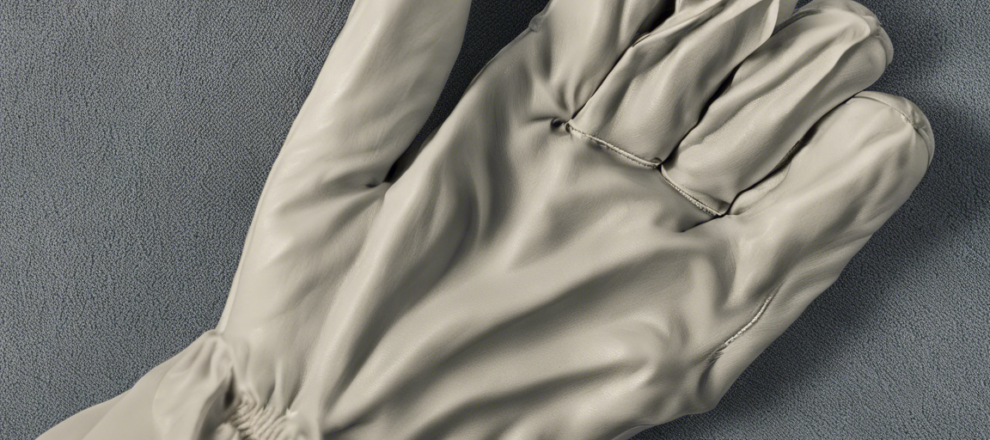Introduction
In the realm of sports and physical activities, the hands play a vital role. They perform numerous functions such as gripping, throwing, catching, and striking, making them susceptible to various types of injuries. One common injury that athletes and fitness enthusiasts encounter is the glove strain. This article aims to delve into the intricacies of glove strains, including their causes, symptoms, prevention strategies, and treatment options.
Understanding Glove Strain
A glove strain, also known as a sprain, refers to an injury to the ligaments in the hand or fingers. Ligaments are tough bands of tissue that connect bones to each other and stabilize joints. When these ligaments are stretched or torn due to excessive force or overuse, a glove strain occurs. This injury can result from activities that involve repetitive hand movements, sudden impacts, or forceful twisting motions. Athletes in sports such as basketball, baseball, football, and tennis are especially prone to glove strains due to the continuous use of their hands during gameplay.
Causes of Glove Strain
-
Repetitive Movements: Engaging in activities that require repetitive hand movements, such as typing on a keyboard or swinging a tennis racket, can strain the ligaments in the hands over time.
-
Forceful Impacts: Direct impacts to the hand, such as catching a fast-moving ball or hitting an object with force, can lead to ligament sprains.
-
Improper Technique: Using incorrect hand positioning or grip mechanics during sports or workouts can increase the risk of glove strains.
-
Overexertion: Putting excessive strain on the hands without allowing for proper rest and recovery can lead to injuries like glove strains.
Symptoms of Glove Strain
The symptoms of a glove strain may vary depending on the severity of the injury, but common signs to watch out for include:
- Pain or tenderness in the hand or fingers
- Swelling or bruising
- Reduced range of motion
- Weakness or instability in the hand
- Popping or snapping sensation during movement
If you experience any of these symptoms, it is essential to seek medical advice to determine the extent of the injury and receive appropriate treatment.
Prevention Strategies for Glove Strain
-
Proper Warm-Up: Always warm up the hands and fingers before engaging in physical activities to prepare the muscles and ligaments for movement.
-
Use Correct Techniques: Ensure that you are using the proper grip and hand positioning during sports or workouts to reduce the risk of strain.
-
Strength and Flexibility: Incorporate hand and finger strengthening exercises into your routine to enhance the stability of the ligaments.
-
Rest and Recovery: Allow adequate time for your hands to rest and recover between intense training sessions to prevent overuse injuries.
-
Wear Protective Gear: Use gloves or finger splints during activities that put significant stress on the hands to provide additional support and cushioning.
Treatment Options for Glove Strain
In case of a glove strain, the following treatment options may be recommended by a healthcare professional:
-
Rest: Avoid activities that exacerbate the pain and give the hands time to heal.
-
Ice Therapy: Apply ice packs to the affected area to reduce swelling and pain.
-
Compression: Use elastic bandages to provide support and reduce swelling in the hand.
-
Elevation: Keep the hand elevated above heart level to minimize swelling.
-
Physical Therapy: Engage in specific exercises to rehabilitate the hand and improve strength and flexibility.
For severe glove strains that do not improve with conservative treatments, surgery may be necessary to repair the damaged ligaments and restore hand function.
FAQs (Frequently Asked Questions)
- Q: How long does it take to recover from a glove strain?
A: The recovery time for a glove strain varies depending on the severity of the injury. Mild strains may heal within a few days to weeks with rest and conservative treatments, while more severe sprains can take several weeks to months to fully recover.
- Q: Can I continue to play sports with a glove strain?
A: It is not advisable to continue playing sports or engaging in activities that aggravate the glove strain. Rest and proper treatment are essential for the healing process.
- Q: Are there any exercises I can do to prevent glove strains?
A: Yes, performing hand and finger strengthening exercises, such as grip squeezes and finger extensions, can help prevent ligament sprains by improving the stability and flexibility of the hands.
- Q: Should I see a doctor for a glove strain?
A: If you experience persistent pain, swelling, or limited hand mobility, it is recommended to consult a healthcare professional for an accurate diagnosis and appropriate treatment plan.
- Q: Can I wear a brace or splint for a glove strain?
A: Depending on the severity of the strain, a healthcare provider may recommend wearing a brace or splint to immobilize the hand and promote healing. It is essential to follow the medical advice regarding the use of supportive devices.
Conclusion
Glove strains are common injuries that can impact hand function and performance in sports and daily activities. By understanding the causes, symptoms, prevention strategies, and treatment options for glove strains, individuals can take proactive steps to protect their hands and reduce the risk of injury. Remember to listen to your body, prioritize proper hand care, and seek medical attention if you experience persistent hand pain or discomfort. Stay proactive in caring for your hands to ensure optimal performance and function in all your endeavors.
